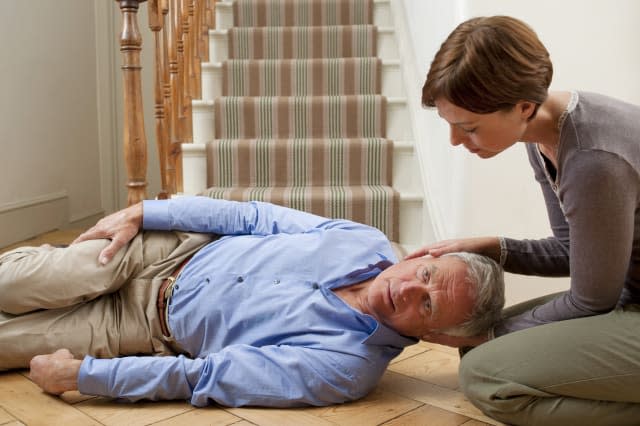How to reduce your risk of breaking a hip

Hip fractures are one of the most-common serious injuries affecting older people in the UK, with around 75,000 people being treated each year – usually caused by a fall or impact to the side of the hip. Reduced mobility and impaired eyesight are the cause in many cases, but osteoporosis (weak and fragile bones) is another factor. This condition is more common in women - meaning that they suffer the majority of broken and fractured hips.
Of course it's impossible to completely eliminate the risk of these injuries, but taking sensible precautions can really help lower the risk...
See also: This simple sitting test could predict how long you will live
See also: Eight ways to stay supple in middle age
Diet
It's both quality and quantity here. A Mediterranean diet rich in fruit, vegetables and oily fish (and low in refined carbohydrates and red meat) has been associated with a 20 per cent lower risk of hip fracture. Keeping a high calcium intake and taking vitamin D supplements are other easy ways of helping your bones stay strong and making sure you don't develop any dangerous deficiencies. As for the quantity, it's important to stay a healthy weight and not get too thin. People with a BMI under 18.5 are statistically more prone to hip fractures.
Drinking and smoking
Drink is a factor in a lot of hip factors, and not only because it makes us unsteady on our feet and more likely to take a tumble. It can also interact with prescription medication to worsen some of the side-effects, and regular drinking can also worsen osteoporosis.
As if there weren't already enough reasons to give up smoking, the habit is also known to worsen osteoporosis, as the toxins in the smoke reduce bone density. Smokers are twice as likely to suffer a hip fracture as non-smokers. There may be other correlating factors at work, but it's a scary statistic nonetheless.
Working out
Keeping active is also absolutely vital to helping your bones stay strong, and exercise will also help retain or improve mobility and co-ordination – making a fall less likely to happen in the first place.
Weight-bearing exercises are particularly good. You don't have to pump iron in the gym though. Leg lifts and squats can have a surprisingly big effect. Even gentle exercise like tai chi or Pilates can bring big benefits in balance. Yoga-type exercises have been linked to a significantly lower risk of hip fracture.
Physical protection
As well as all the lifestyle factors above, it's also possible to take some easy steps to lower the risk of a hip fracture. If there's a hint of snow or ice – or slippery wet surfaces – be sure to take your time and keep one foot firmly planted on the floor at all times. Use a walking stick or pole as well if you feel at all unsteady.
Buying slip-proof footwear seems obvious, but many people only think of it once they're in a stretcher on their way to A&E. Walking boots with deep lugs and studded ice overshoes for normal footwear will both provide much greater security in icy conditions.
If you suffer from osteoporosis it's a good idea to invest in a pair of hip protectors. The pads can be strapped-on like a belt or worn integrated into underwear – and modern materials mean they are low in profile.
Give some thought to likely spots where you could fall in your own home. Get anti-slip bathroom and toilet mats, tidy up clutter and keep an eye out for other trip hazards.



